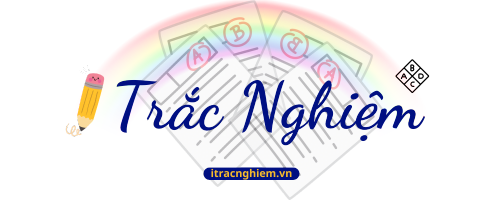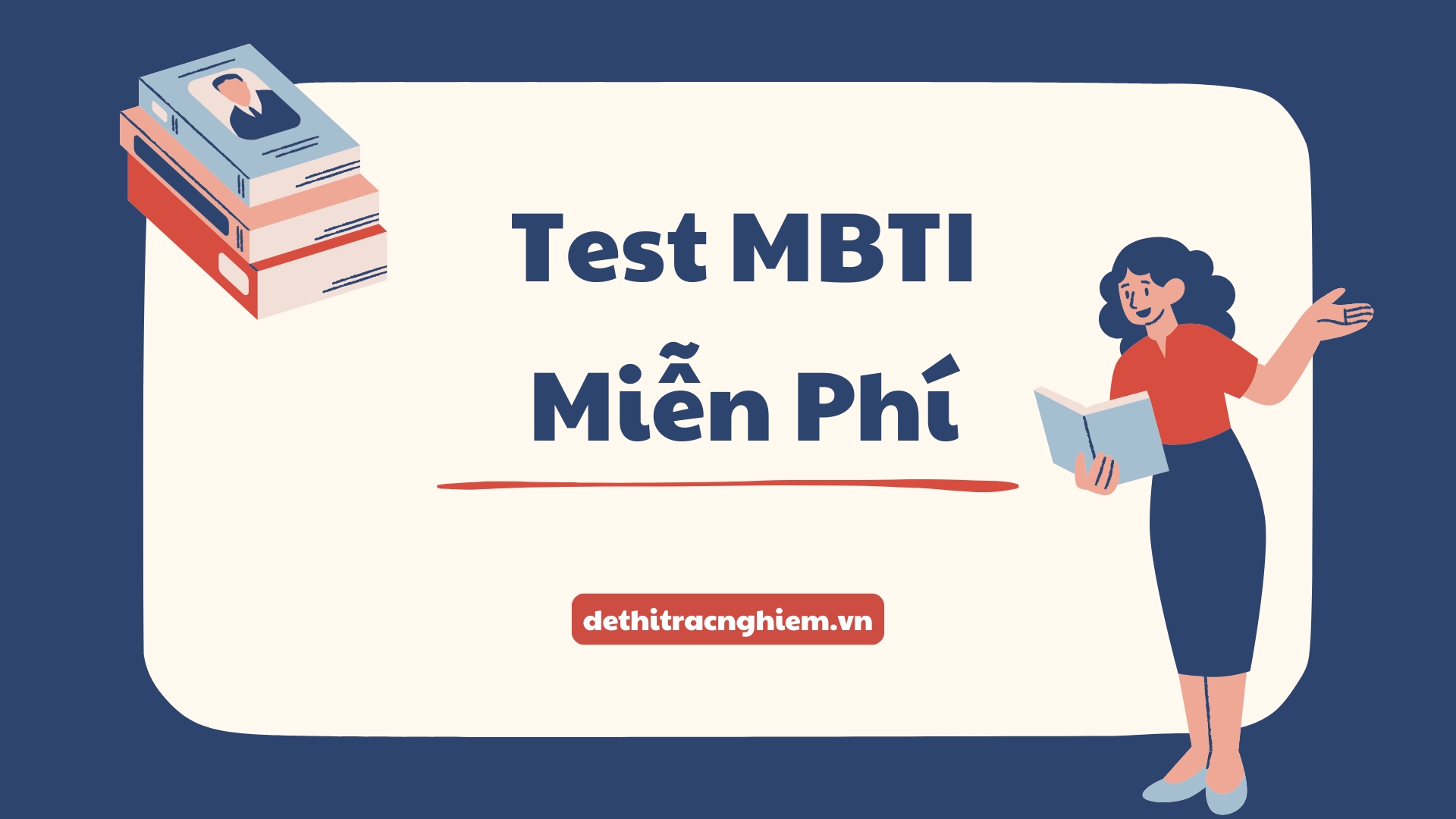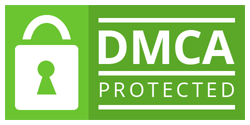Trắc Nghiệm Phương Pháp Nghiên Cứu Khoa Học HCMIU là bài đề tham khảo dành cho sinh viên đang theo học môn Phương pháp nghiên cứu khoa học tại Trường Đại học Quốc tế – Đại học Quốc gia TP. Hồ Chí Minh (HCMIU). Kho tài liệu đại học dành cho sinh viên được biên soạn bởi TS. Lê Hoàng Minh, giảng viên Khoa Quản trị Kinh doanh – HCMIU, năm 2024. Nội dung đề thi bao phủ các chủ đề quan trọng như xây dựng vấn đề nghiên cứu, phương pháp định tính và định lượng, cách lập kế hoạch thu thập dữ liệu, cũng như cách phân tích và trình bày báo cáo nghiên cứu theo chuẩn quốc tế phù hợp với môi trường đào tạo song ngữ tại HCMIU.
Hệ thống dethitracnghiem.vn mang đến cho sinh viên cơ hội luyện tập với đề trắc nghiệm Phương pháp nghiên cứu khoa học HCMIU được biên soạn sát với chương trình giảng dạy. Các câu hỏi được thiết kế dưới dạng trắc nghiệm khách quan, đi kèm đáp án và lời giải chi tiết giúp người học dễ dàng nắm bắt trọng tâm kiến thức. Giao diện trực quan, chức năng lưu đề yêu thích và thống kê kết quả học tập giúp sinh viên quản lý quá trình ôn luyện hiệu quả, từ đó tự tin hơn trong kỳ thi cuối kỳ và các dự án nghiên cứu học thuật.
Hãy cùng dethitracnghiem.vn khám phá bộ đề này và kiểm tra ngay kiến thức của bạn!
Trắc Nghiệm Phương Pháp Nghiên Cứu Khoa Học HCMIU
Câu 1. What is the core principle of “objectivity” in scientific research?
A. The research findings must align with the researcher’s initial hypothesis.
B. The conclusions must be based on evidence and logic, free from personal bias or feelings.
C. The research process must utilize the most advanced and expensive technology available.
D. The study should only be conducted by researchers who have no prior knowledge of the topic.
Câu 2. A research project that aims to solve a specific, practical problem, such as optimizing a supply chain for a company, is best described as:
A. Basic research.
B. Exploratory research.
C. Descriptive research.
D. Applied research.
Câu 3. A team of biotechnology students at IU is studying the fundamental gene-editing mechanism of CRISPR-Cas9…
A. Developmental research…
B. Applied research…
C. Basic research…
D. Correlational research…
Câu 4. Which of the following is NOT a characteristic of a good research problem?
A. The problem is extremely broad and covers multiple unrelated disciplines.
B. The problem is relevant…
C. The problem is clearly stated…
D. The problem is feasible…
Câu 5. The ethical principle of “informed consent” requires that participants must:
A. Be paid…
B. Voluntarily agree to participate after understanding the research purposes and risks.
C. Agree with…
D. Be selected randomly…
Câu 6. What is the primary function of a “research question”…
A. To state a definitive conclusion…
C. To provide a clear focus and guide the direction of the entire inquiry.
B. To present a list…
D. To predict…
Câu 7. A study’s “reliability” refers to:
A. The degree to which…
B. The consistency and stability of the measurement tool used in the research.
C. The extent to which…
D. The practical and theoretical…
Câu 8. Plagiarism is best defined as:
A. Using another person’s ideas, words, or data without giving proper credit.
B. Critically analyzing…
C. Paraphrasing…
D. Quoting…
Câu 9. In an experimental study, the “independent variable” is:
A. Measured to see…
B. Manipulated or changed by the researcher.
C. Kept constant…
D. A factor that unexpectedly…
Câu 10. In the fertilizer and crop yield study, crop yield is the:
A. Independent variable.
B. Confounding variable.
C. Dependent variable.
D. Control variable.
Câu 11. The main purpose of a “literature review” is to:
A. Demonstrate how many…
B. To find a research gap and to position the new study within the existing knowledge.
C. To copy and paste…
D. To list all definitions…
Câu 12. “Students who spend more hours in labs…” is an example of:
A. Research objective.
B. Research problem.
C. Research question.
D. Testable hypothesis.
Câu 13. Which of the following is a type of “probability sampling”?
A. Quota sampling…
B. Convenience sampling…
C. Systematic sampling, where every nth individual is selected from a list.
D. Snowball sampling…
Câu 14. A study collecting data at one time is called:
A. Longitudinal study.
B. Cross-sectional study.
C. Experimental study.
D. Case study.
Câu 15. Internal validity is threatened when:
A. Results cannot be generalized…
B. Instrument is inconsistent…
C. An external factor…could have caused the observed effect.
D. Sample size is too small…
Câu 16. In qualitative research, the sample size is:
A. Determined by complex stats…
B. Small, and determined by the principle of “data saturation”.
C. Required to be over 1,000…
D. Same as entire population…
Câu 17. Best approach to explore organizational culture:
A. Controlled experiment
B. Large-scale survey
C. A qualitative case study.
D. Correlational analysis
Câu 18. Data collected firsthand is:
A. Primary data
B. Secondary data
C. Qualitative data
D. Quantitative data
Câu 19. Classifying students by major uses which scale?
A. Ordinal scale
B. Interval scale
C. Ratio scale
D. Nominal scale
Câu 20. Temperature in Celsius is measured on:
A. Nominal scale
B. Ordinal scale
C. Interval scale
D. Ratio scale
Câu 21. Inferential statistics are used to:
A. Summarize and describe…
B. Draw conclusions about a population based on data from a sample.
C. Create visual representations…
D. Organize and clean raw data…
Câu 22. IMRaD structure – interpretation is in:
A. Introduction
B. Methods
C. Discussion
D. Results
Câu 23. A p-value of 0.03 means:
A. Support H0
B. Statistically significant…
C. 97% correct
D. Flawed test
Câu 24. Main purpose of peer review:
A. Grammar correction
B. Idea copying
C. Ensure quality and validity by expert evaluation
D. Check topic popularity
Câu 25. The “Methods” section includes:
A. Interpretation
B. Review of literature
C. Description of sample, procedures, and analysis techniques
D. Summary and suggestions…
Câu 26. Ice cream–crime correlation fallacy is:
A. Threat to internal validity
B. Correlation does not imply causation
C. Type I error
D. Poor sampling
Câu 27. Abstract serves as a:
A. Stats explanation
B. Comprehensive summary of purpose, methods, results, conclusions
C. Reference list
D. Personal reflection
Câu 28. Reproducibility means:
A. Must be profitable
B. Groundbreaking
C. Methods must allow repetition by others
D. Same researcher must always…
Câu 29. Appendices should contain:
A. Main conclusions
B. Author affiliations
C. Abstract
D. Supplementary materials
Câu 30. Ethical way to handle unexpected results:
A. Fabricate data
B. Report the findings accurately and discuss reasons
C. Omit unexpected results
D. Discard and start new




